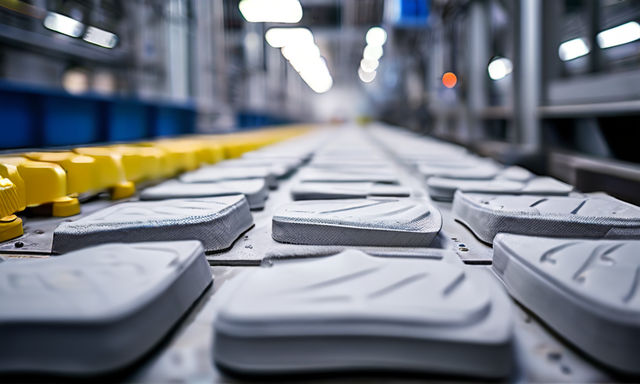Rubber Vacuum Vulcanization: Practical Explanation from Fundamentals to Applications
 In modern industrial manufacturing, vacuum pumps play a crucial role, especially in the field of rubber production. Rubber vacuum vulcanization, as a key step in the manufacturing process, determines the important aspect of product quality and performance. This article will delve into the significance, principles, and how to enhance efficiency through optimized processes in rubber vacuum vulcanization.
In modern industrial manufacturing, vacuum pumps play a crucial role, especially in the field of rubber production. Rubber vacuum vulcanization, as a key step in the manufacturing process, determines the important aspect of product quality and performance. This article will delve into the significance, principles, and how to enhance efficiency through optimized processes in rubber vacuum vulcanization.1. What is Rubber Vacuum Vulcanization?
Rubber vacuum vulcanization is a common process in rubber manufacturing. Its main purpose is to accelerate the reaction of sulfur and other additives in rubber raw materials under high temperature and pressure, thereby forming a cross-linked structure to enhance the mechanical properties, wear resistance, and aging resistance of rubber. In this process, vacuum pumps play a crucial role by effectively removing gases generated during vulcanization, maintaining a vacuum environment, and promoting the progress of reactions.
2. Fundamentals of Rubber Vulcanization
The molecular structure of rubber mainly consists of long-chain polymer molecules containing numerous double bonds (usually carbon-carbon double bonds). In its natural state, these double bonds keep rubber molecules soft and deformable, which is not ideal for many applications. During vulcanization, sulfur reacts with the double bonds in rubber molecules to form sulfur bridges. These sulfur bridges connect different rubber molecules together, forming a three-dimensional network or cross-linked structure. This cross-linked structure makes rubber stronger, more durable, and enhances its elasticity and wear resistance, making it suitable for various industrial and consumer applications. Besides sulfur, other vulcanizing agents such as peroxides and thiols can also be used. Different vulcanizing agents result in different vulcanization reactions, thereby affecting the performance of the final product. Additionally, temperature and pressure conditions during vulcanization also significantly influence the rate of vulcanization reactions and the properties of products.
3. How to Optimize Rubber Vacuum Vulcanization Process?
Optimizing the rubber vacuum vulcanization process is crucial for improving production efficiency and product quality, reducing production costs, and enhancing competitiveness and market share of products. Through the following optimization methods, the efficiency and quality of the rubber vacuum vulcanization process can be effectively improved:
- Selecting suitable vacuum pumps: Choose vacuum pumps based on the size of rubber products, types of vulcanizing agents, and size of vulcanization chambers. Different pumps have different pumping rates and maximum vacuum levels, selecting the appropriate pump can improve vulcanization efficiency.
- Precisely controlling heating parameters: Control heating parameters such as temperature and heating time to ensure sufficient reaction of vulcanizing agents in rubber materials while avoiding overheating that may degrade product quality.
- Strictly controlling vulcanization environment: Maintain stable vacuum levels inside the vulcanization chamber to prevent the influence of gas residues or leaks on vulcanization effectiveness. Regularly inspect vacuum pipelines and seals and promptly repair any leakage issues.
- Selecting appropriate vulcanizing agents: Choose the type and amount of vulcanizing agents based on the usage and requirements of rubber products. Different vulcanizing agents have different vulcanization rates and effects, selecting the appropriate one can improve product performance.
- Enhancing production process monitoring: Install monitoring equipment for parameters such as temperature, pressure, vacuum level, etc., to monitor changes in parameters during vulcanization process in real-time, and adjust process parameters timely to ensure product consistency and quality stability.
4. Conclusion
Rubber vacuum vulcanization, as a crucial step in rubber manufacturing, plays a decisive role in product quality and performance. Through proper process optimization and control, vulcanization efficiency can be improved, production costs reduced, while ensuring product consistency and quality stability. It is hoped that the content introduced in this article can be helpful for understanding and applying the rubber vacuum vulcanization process.

